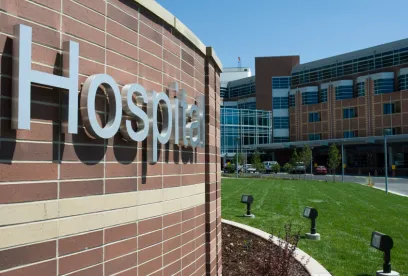In a report issued by the Office of the Inspector General (OIG) at the Department of Health and Human Services (HHS) on March 23, 2021 (the “2021 Report”), representatives from 320 hospitals in 45 states, the District of Columbia, and Puerto Rico were interviewed on their experiences responding to the COVID-19 pandemic. Questions were focused on the hospitals’ most difficult challenges in responding to COVID-19, strategies used by the hospitals in addressing or mitigating those challenges, and how the government could best support hospitals responding to COVID-19. This report was a follow-up to a similar OIG pulse survey released about a year ago on April 3, 2020 (the “2020 Report”), which summarized hospitals’ answers to the same questions near the start of the pandemic. The two reports, published one year apart, provide a useful snapshot into how hospital challenges have evolved in responding to the pandemic. Looking at the two reports side-by-side, we compare the challenges hospitals faced in 2020 versus the challenges they are now contending with one year later in 2021.
Significant Challenges in Patient Care Delivery in 2020
The OIG reports summarize the challenges that hospitals across the country reported in treating patients at various points during the COVID-19 pandemic. In the 2020 Report, OIG reported that the overarching challenges for hospitals towards the start of the pandemic “centered on testing and caring for patients with COVID-19 and keeping staff safe.” Specifically, hospitals faced challenges related to the availability of tests and the extended wait time for test results. One consequence was that hospitals had to treat all symptomatic patients as presumptive positive cases of COVID-19, leading to unnecessary crowding of beds where availability was already strained, “rapid burn” of personal protective equipment (PPE) at a time when supplies were limited, and worsening staff shortages as staff who may have been exposed to COVID-positive patients stopped working to avoid the spread of the disease. Furthermore, some long-term post-acute care facilities refused to admit patients without a negative COVID-19 test, leading to overcrowding of hospitals as patients not sick enough to stay hospitalized but not healthy enough to go home were forced to delay discharge while waiting for test results.
Against this backdrop, OIG’s 2020 Report described hospital concerns related to loss of revenue, in part due to the suspension of elective procedures and other services that had accounted for a substantial portion of pre-pandemic revenue. Hospitals that are part of a health system reported fewer financial losses compared to independent and rural hospitals in the 2020 Report.
Additional Challenges Further Exacerbate Patient Care Delivery Concerns in 2021
As the COVID-19 pandemic is still ongoing, treating COVID-positive patients is still the immediate concern according to the 2021 Report. Hospitals continue to report that the volume of patients coming through their doors is placing a severe strain on their capacity, leading to bed, equipment and supplies, and staff shortages. Hospitals reported that since normal hospital operations have been resuming, it has been difficult to integrate COVID-19 patient care into daily hospital operations, especially in terms of infection control. Exacerbating these problems, the 2021 Report highlights that discharging COVID-19 patients is still difficult due to challenges in transferring patients to long-term post-acute care facilities that are “unwilling or unable” to accept patients who may have an active COVID-19 infection.
Also not unlike the 2020 Report, the 2021 Report describes hospital challenges with maintaining adequate staff to care for serious and complex COVID-19 cases. In 2021, hospitals report higher than normal turnover among medical staff due to early retirement, stress-related career shifts, and unexpected competition for medical staff between and among hospitals and staffing agencies.
New to the 2021 Report, OIG describes that hospitals are now concerned with caring for patients that delayed routine health care during the first year of the pandemic, “which has led to worsening of patient conditions.” Hospitals report that patients have been sicker and in need of greater care after delaying primary care exams and diagnostic tests, leading to a greater burden on already limited hospital resources. Hospitals are also concerned that lack of trust in the safety of hospitals after the pandemic could lead to patients further delaying necessary preventive care, which may require hospitals to be prepared to manage even more complex and serious care delivery in the long-run. Also new to the 2021 Report is the concern that mental and behavioral health care has become a significant need for patients; hospitals are concerned with having the resources necessary to meet this emerging need.
Another new concern in 2021 is the challenge hospitals faced in vaccinating front-line health care workers. Although hospitals report that vaccination was a “positive step toward pandemic recovery,” they report needing to divert clinical staff to assist in vaccination efforts. As a result, vaccination efforts have tended to exacerbate existing problems with staff and supply shortages. Hospitals also report that managing different vaccination priorities across jurisdictions has created further complications, especially for border hospitals serving patients from two states. Access to vaccinations in certain communities, the occurrence of hospital staff declining to be vaccinated, and unpredictable supply of vaccines have created further challenges for hospitals at an already resource-constrained time.
As in 2020, all of these pandemic-related challenges have culminated in an overall concern with the financial stability of hospitals moving forward. Even routine care is increasingly costly due to increases in the cost of PPE and staff, as well as COVID-19 testing and patient care. Hospitals also report that even with the resumption of elective surgeries in some areas, revenue from these services has not reached pre-pandemic levels. Hospital administrators further report that Medicare reimbursements do not always cover the cost of providing care to COVID-positive patients. One hospital, for instance, “estimated that it was potentially losing $3,000 per COVID-19 patient” due to insufficient reimbursement.
Looking Ahead: Strategies to Address Hospital Challenges
The OIG reports from 2020 and 2021 outline a variety of ways that hospitals have been addressing these widespread challenges in pandemic health care delivery. For instance, hospitals describe an increased reliance on telehealth as an important tool for delivering care to patients during the COVID-19 pandemic. Hospitals have also attempted to rely on “resource networks and communication with other hospitals” to facilitate transfer and appropriate discharge of patients to the correct post-acute care setting, freeing up hospital resources for more emergent patient care needs. Hospitals have also relied on reallocating staff from other hospitals or within their health systems to address staff shortages on an as-needed basis. Moreover, hospitals hope to encourage patients to resume routine medical care using targeted outreach approaches to avoid the risk of having to manage more complex patient care needs in the future.
The long-term impact of the COVID-19 pandemic on hospitals remains to be seen, but these OIG reports provide a useful “temperature check” into understanding what challenges hospitals are currently facing and how these challenges may evolve, worsen, or improve moving forward.




 />i
/>i

